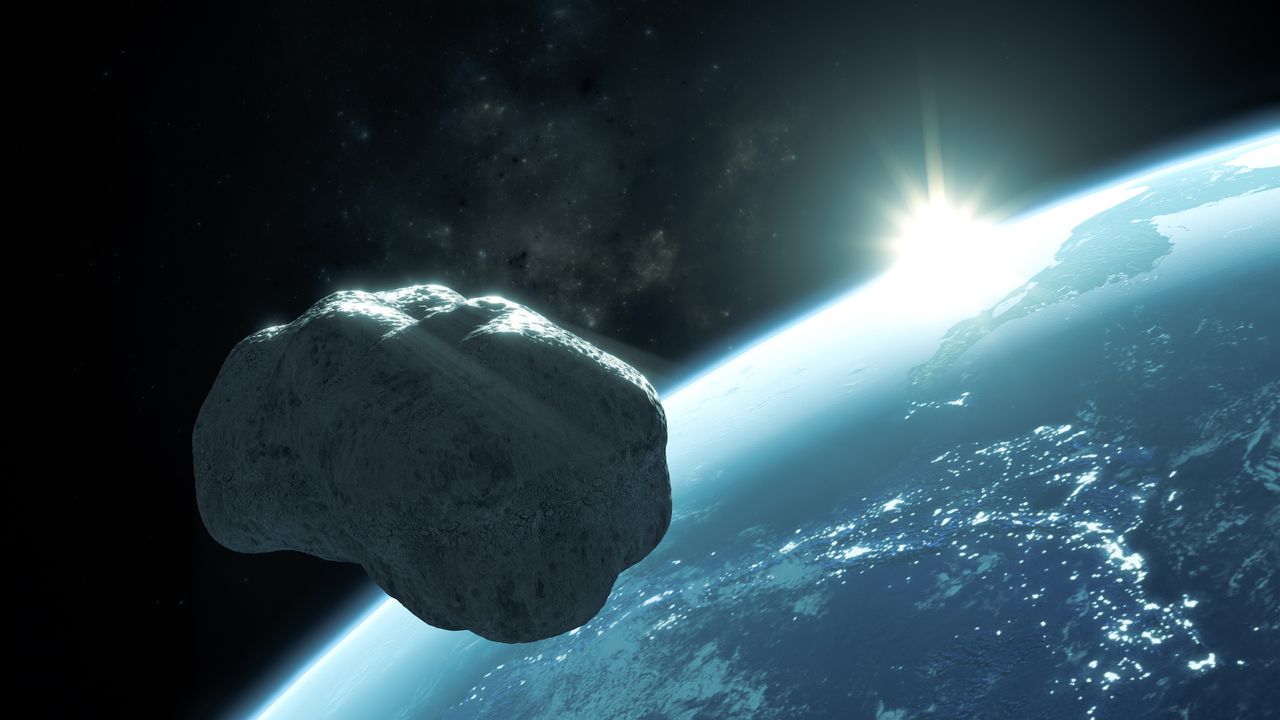NASA’s OSIRIS-APEX Mission Secures Funding to Continue Study of Potentially Hazardous Asteroid Apophis
NASA’s plans to fly a spacecraft alongside the potentially hazardous asteroid Apophis in 2029 will continue for at least another year. After threats of mission cancellation, the OSIRIS-APEX spacecraft received a last-minute $20 million allocation in the House budget bill, securing basic operations for the next fiscal year.
The news was first announced on October 7 at a meeting of the National Academies’ Committee on Astrobiology and Planetary Sciences, according to Ars Technica. Dani Mendoza DellaGiustina, principal investigator of OSIRIS-APEX at the University of Arizona, expressed relief: “We were incredibly relieved and grateful,” she told Live Science in an email.
### What is OSIRIS-APEX?
OSIRIS-APEX stands for “Origins, Spectral Interpretation, Resource Identification and Security Apophis Explorer.” The mission aims to observe Apophis, a quarter-mile-wide (400-meter) asteroid once thought to pose a minor threat to Earth during its close encounter in 2029.
Named after an ancient Egyptian god associated with chaos, Apophis is now known to safely pass by Earth thanks to more precise observations. However, it will come very close—passing inside the orbit of geostationary satellites, roughly 22,000 miles (36,000 km) away—potentially visible to the naked eye.
Despite the safe 2029 flyby, Apophis’s periodic crossings of Earth’s pathway mean there remains a risk of impact in the distant future.
### Utilizing Existing Spacecraft for a Cost-Effective Mission
OSIRIS-APEX uses the OSIRIS-REx spacecraft, which famously collected a small sample from asteroid Bennu in 2020 and recently returned the sample to Earth. The core spacecraft remains healthy, making it economical to repurpose the mission rather than launch a new spacecraft.
“Apophis is one of the most compelling near-Earth asteroids we’ve ever discovered,” said DellaGiustina. “By studying Apophis during and after its Earth encounter, we have a unique opportunity to understand how close planetary flybys reshape small bodies: from seismic shaking and surface landslides to changes in rotation and orbit.”
### Threat of Cancellation and Budget Challenges
Despite the mission’s scientific value, the Trump administration proposed canceling OSIRIS-APEX in May as part of sweeping NASA budget cuts. The proposed cuts would have slashed NASA’s budget by nearly 25%, from $24.8 billion to $18.8 billion, putting 19 missions including OSIRIS-APEX at risk.
The fate of the other 18 missions remains uncertain due to the ongoing U.S. government shutdown, which began October 1 after congressional disagreements over the fiscal budget.
While OSIRIS-APEX’s operations are secure through fiscal years 2026-27, NASA funding is reviewed yearly, meaning the mission will face funding reconsideration next year. DellaGiustina remains hopeful, noting that the mission was explicitly named in both the House and Senate versions of the fiscal 2026 NASA budget, thanks in large part to support from Arizona’s congressional delegation—Senator Mark Kelly, a former NASA astronaut, and Representative Juan Ciscomani, an alumnus of the University of Arizona.
“Congress recognized the value of keeping our healthy spacecraft and instruments operational as we cruise toward Apophis,” DellaGiustina said. “It doesn’t guarantee funding in future years, but it keeps us moving forward and gives us a fighting chance to carry out this once-in-a-lifetime encounter.”
### Future Science at Risk Despite Funding Relief
Though the funding news was a relief, it does not come without drawbacks. The OSIRIS-APEX science team did not receive any funding for active research this year. This means mission managers and early-career researchers, including students, cannot conduct analysis, planning, or mission science during this period.
DellaGiustina described this situation as “disheartening,” highlighting the impact on mentorship and professional development opportunities. The 2022 NASA senior review—a community effort conducted every three years to evaluate the value of missions—had explicitly praised OSIRIS-APEX’s efforts to mentor junior scientists and transition them into senior roles.
The review also commended the scientific productivity of OSIRIS-APEX and OSIRIS-REx, noting at least 137 scientific papers produced that provide significant insights into small asteroid structure and evolution.
### Looking Ahead
As OSIRIS-APEX prepares for the dramatic 2029 Earth flyby of Apophis, the mission remains a vital opportunity to expand our understanding of near-Earth objects and planetary defense. Continued funding and support will be essential to capitalize on this once-in-a-lifetime encounter with an asteroid that passes surprisingly close to our planet.
—
*Stay tuned for updates on OSIRIS-APEX and NASA’s other planetary science missions as funding and government decisions continue to evolve.*
https://www.livescience.com/space/space-exploration/usd20-million-nasa-mission-to-visit-god-of-chaos-asteroid-saved-from-budget-cuts-in-last-minute-decision

Be First to Comment